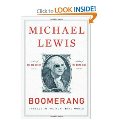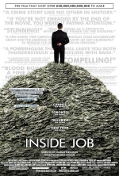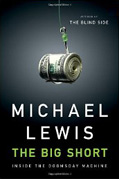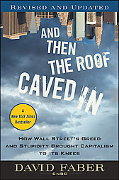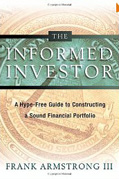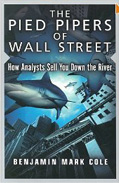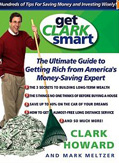
Boomerang: Travels in the New Third World
By Michael Lewis (W.W. Norton & Co. 2011)
In “Boomerang,” Michael Lewis, author of “ Liar’s Poker,” “Moneyball” and “The Blind Side” once again shows off his wit and insight about human nature and money.
In “The Big Short,” Lewis described how U.S. investment banks, led by greedy, stupid and over-compensated CEOs, created financial instruments that generated short-term profits and long term misery. “Boomerang” examines the international consequences of the economic tsunami that Wall Street triggered and contemplates how entire nations have fallen prey to the same “live for today and let tomorrow take care of itself” mentality.
The first stop on Lewis’ world tour is Iceland, whose businessmen(emphasis on men–this was a real boys’ club) used cheap credit as an excuse to go on an epic international spending spree, buying businesses they did not understand at prices that defied reason. When the music stopped, a nation of only 300,000 had lost over $100 billion.
Lewis then travels to Greece where he paints a devastating portrait of economic collapse caused by the mutual corruption of government and citizens. Government employees are paid extravagantly (three times their private sector counterparts) bribes are as common as ouzo and tax evasion is practically a national pastime. Nothing Lewis writes offers any reason for even slight confidence in Greece’s ability to work its way out of its debt crisis.
The situation is nearly as dire in Ireland. There, the major banks made ridiculously imprudent loans that were used to buy and develop local real estate. Lewis recounts the sad story of a young Merrill Lynch analyst who published a report in March 2008 that questioned the soundness of loans by three large Irish banks. Almost immediately after the report was released, the banks threatened to pull their investment business from Merrill, which “apologized” for the report and fired the analyst. However, the analyst was right, the real estate bubble burst six months later and the banks were left with billions in debt. According to Lewis, the real tragedy is that the Irish government, meaning the taxpayers, bailed out the banks by guaranteeing their debts.
Before coming back to the USA, Lewis takes a trip to Germany, whose frugal citizens are outraged at the prospects of having to bail out their less fiscally restrained brethren to the south and west. At the same time, the German bankers rue their willingness to have believed the sweet lies told them by their U.S. counterparts who used them as the ultimate suckers willing to buy subprime CDOs.
Once at home, Lewis takes a hard look at California. What he describes is disturbingly reminiscent of the collapse he chronicled in Europe. Citizens demand services, but refuse to allow the legislature to levy the taxes needed to pay for them.
“Boomerang” is not meant to be an economic or historical treatise. Lewis revels in national stereotypes and does not pretend that he has the solutions to the failures that he describes so adroitly. That said, “Boomerang” makes very important points with humor and a deep sense of foreboding.
Inside Job
By Charles Ferguson (Sony Pictures Classics, 2010)
The economic collapse of 2008 was no accident. It was an “Inside Job,” according to filmmaker Charles Ferguson. His award winning documentary is essential viewing for anyone who wants to look behind the curtain at the forces that caused the real estate/subprime bubble that brought many of the world’s biggest economies to their knees.
Click here to watch the “Inside Job” Trailer
There are plenty of bad guys involved in the “Inside Job”—unscrupulous lenders, Wall Street firms eager to sell unsuspecting investors securities made up of toxic subprime loans, rating agencies that made enormous sums for blessing those same rotten securities with their AAA stamp of ultra-approval, politicians of both parties, the Fed, and academics who churned out pro-industry propaganda disguised as scholarships.
Do not fret that “Inside Job” is one of those “eat your vegetables” boring documentaries where the message is important, but the filmmaking is dull enough to undo the caffeine jolt of a triple espresso. This film is riveting from start to finish. The narration by Matt Damon is exciting, the cinematography is crisp, and there’s even a dollop of sex, in the person of a Wall Street madam. If you have any curiosity at all about how some of the supposedly best minds in the world could ignore the simplest of truths [Newton—what goes up must come down; Buffett—if you lend to people who can’t pay you back, it will not turn out well.], this movie will help explain it. Sadly, what it won’t do is give you any reason to believe it won’t happen again. But that’s not the movie’s fault, it’s ours. Smiley Bishop & Porter LLP represents the victims of Wall Street securities fraud, but sometimes it’s a really good idea to view the big picture through a telescope rather than individual stories through a microscope. “Inside Job” offers the big picture. The only question is whether we can collectively handle the truth.
The Big Short: Inside the Doomsday Machine
By Michael Lewis (W. W. Norton & Co., 2010)
This is certainly the most readable book about the market crash of 2008. That crash began with subprime loans issued by sleazy lenders. Those loans were then pooled into bonds issued by Wall Street firms, and sold to investors (like pension funds) who were deceived by misleading credit ratings bought and paid for by the issuers.
Michael Lewis, a former investment banker turned popular writer (“Liar’s Poker”, “Moneyball”, “The Blind Side”), tells a tale of greed and stupidity by focusing on the most unlikely of “heroes”—short sellers who saw through the subprime charade. Like the little boy who dared to utter that the emperor was naked while the crowd praised his new clothes, the short sellers portrayed by Lewis believed their own eyes and understood that, as Warren Buffet put it, “if you lend money to people who cannot pay you back, it will not end well.”
And Then the Roof Caved In: How Wall Street’s Greed and Stupidity Brought Capitalism to Its Knees
By David Faber (John Wiley & Sons, Inc., 2009)
CNBC correspondent David Faber’s analysis of the causes of the economic collapse in 2008 is summed up in his book’s subtitle: we were all done in by greed and stupidity.
Faber begins his story by recalling the traumatic month of September 2008, in which Lehman Bros. filed bankruptcy and Merrill Lynch sold itself for a pittance. From that vantage point, he looks backward to the chain of events that led, almost inevitably, to the collapse of the world’s markets.
The heart of the problem was—no spoiler here—a housing bubble that was caused by the Fed’s policy of cheap credit and subprime lenders’ willingness to loan money to anyone with a pulse and a parcel of dirt. Faber details the ludicrous mortgage products the subprime lending industry created. These included loans in which borrowers’ incomes were never verified, monthly payments did not even cover interest charges, and property appraisals that sometimes seemed like science fiction. Two bank regulators, Sheila Blair of the FDIC and Ned Gramlick of the Fed, get credit for realizing the danger of making too many loans to people who could not repay them back. Unfortunately for all of us, there was no political will or economic incentive for anyone to end the party.
Faber explains how Wall Street firms facilitated the plague of bad mortgages by providing the capital that lenders like Ownit, First Franklin, New Century, and Ameriquest loaned to borrowers with poor credit. In turn, the Wall Street firms bought the loans, packaged them into financial Frankenstein monsters like collateralized debt obligations (well explained by Faber in a chapter called, “The Securitization from Hell”), and credit default swaps (brides of Frankenstein) and then sold them to hapless investors ranging from hedge funds to the town of Narvik, Norway (pop. 18,000). As Faber shows, the investors were beguiled by the AAA ratings that Moody’s or S&P (who were paid by the issuers) recklessly slapped on securities that seemed doomed to fail.
One of Faber’s most interesting chapters puts Merrill Lynch under the microscope. He shows that the spark both for Merrill’s staggering profits in 2005 and 2006 and for its spectacular collapse was the firm’s massive involvement in the business of underwriting and securitizing mortgages. Merrill was like other firms (Citigroup, Lehman, Bear Stearns, Morgan Stanley, Goldman Sachs and UBS) in that it had tons of exposure to subprime debt. But Merrill, led by Stan O’Neil, who played lots of golf while his firm imploded, had the greatest exposure to CDOs and other investments tied to subprime mortgage debt of all of the major firms. When the housing bubble burst, borrowers began to default and rating agencies dropped ratings, Merrill was left holding a very stinky bag – a 2007 pre-tax loss of $12.8 billion, followed by $41.2 billion in 1008. As the dust began to settle, investment banks wrote off $1.2 trillion and taxpayers footed the bill for the bankers. What’s truly galling is that it was the bankers who resisted the government regulation when the profits were rolling in and then begged for a government bailout when the roof caved in.
By now there are lots of books on the financial crisis. The definitive volume probably has yet to be written, but in the meantime for an informative and entertaining overview, David Farber’s book is highly recommended.
The Informed Investor: A Hype-Free Guide to Constructing a Sound Financial Portfolio – 2nd edition
By Frank Armstrong, III (Amacom, 2003)
This excellent book is highly recommended to anyone who is truly serious about investing. The author is a south Florida financial planner and frequent columnist on money matters. With clear and convincing data to support him, Mr. Armstrong debunks many of the myths Wall Street pushes on the investing public. Mr. Armstrong demonstrates the futility of trying to “beat the market”, whether through stock picking and market timing or by following mutual funds that have shown high levels of performance in the past. After showing that market gurus, fund managers, (and need we say it) equity analysts, have feet of clay, the author makes a convincing case for trying to meet, rather than beat, the market. Thus, Mr. Armstrong advocates investing in a diversified basket of index funds. Although he recommends utilizing fee-only financial planners (such as himself), he gives sound advice and strategies for building one’s own portfolio without outside help. His chapter on investing during retirement is particularly insightful. Whether or not one ultimately agrees with Armstrong’s point of view, this is a book which deserves attention.
The Pied Pipers of Wall Street
By Benjamin Mark Cole (Bloomberg Press, 2001)
Ever wonder why the stocks your brokerage recommends never seem to perform particularly well? The premise of this timely book is that the analysts who work at brokerages are little more than shills who suspend skepticism and abandon objectivity in order to sing the praises of investment banking clients for whom the brokerages underwrite IPOs, do mergers and acquisitions, and make private placements. The author, a long time financial writer, demonstrates that as brokerages have lost commission income from retail clients owing to increased competition from discounters, they have more than made it up with revenue from investment banking clients. And with that shift of income has come a shift of loyalty.
In years past, brokerages assured us that there was a “Chinese Wall” between their research and investment banking departments; today they are Siamese twins. As one former research director put it, “An analyst is just a banker who writes reports… no one makes a pretense that it’s independent.” One result of this incestuous relationship is that between 1989 and 1996, the average error in forecasting earnings was a staggering 50%, and by a 3-to-1 margin the earnings estimates made by analysts were too high. Likewise, brokerage research departments are loathe to issue a “sell” signal on companies they follow. In 1999, out of 33,169 recommendations by brokerage analysts, only about one percent were actual “sells” or could be interpreted as such.
Mr. Cole also includes numerous case studies where analysts have either closed their eyes to obvious problems and touted favored companies virtually up to the day they file for bankruptcy, or, in some instances, actively participated in schemes to manipulate stock prices. On the positive side, Cole presents examples of honest analysts who have sacrificed their jobs to tell the truth, and even identifies several truly independent analysts (such as Value Line, Red Chip Review and Standard & Poors) with good track records. Overall, this is an important book, which despite its weighty topic, is written in an entertaining, journalistic manner.
Get Clark Smart
By Clark Howard and Mark Meltzer (Longstreet Press, 2000)
This book by syndicated radio host Clark Howard and journalist Mark Meltzer abounds with common sense advice for consumers. It covers topics as diverse as investing, travel tips, buying cars and dealing with repairs, choosing credit cards, real estate purchases and rentals, and consumer scams. On the topic of investing, Howard and Meltzer advocate making regular, periodic purchases of no-load mutual funds, particularly index funds. Each section of this invaluable book concludes with bullet point summaries and a list of useful websites and contacts. By necessity, the book is an overview, not an in-depth treatment, but it is nonetheless well-written, well-researched and well-worth your hard earned dollar.
